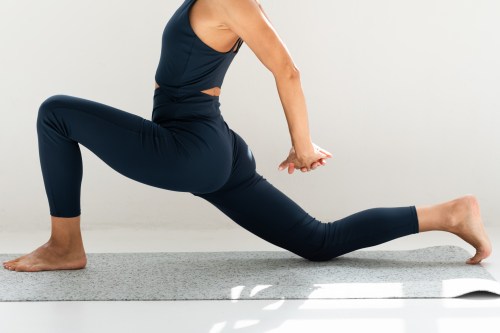Nobody feels neutral about a forward fold. You either crave the the release it gives your hamstrings and low back, or tense up just thinking about reaching for your toes. And while the pose (also known as uttanasana), seems self-explanatory in name, it’s one that’s so easy to mess up.
“Whether seated or standing, a forward fold incorporates forward flexion of the spine which decreases the space between your belly and thighs,” says Kat Sand, PhD, senior Director of operations at CorePower Yoga. “A forward fold is a forward tilt of your pelvis meaning your hip bones rotate and tip slightly forward and down.”
A forward fold also combines flexibility and range of motion in your hamstrings, says Jeffrey Villanueva, a New York City-based instructor at Yoga Vida.
With a combined 20 years of experience, these yoga teachers always see the same mistakes with uttanasana, or forward fold.
Rounding your shoulders
“There should never be a rounding of the shoulders,” says Villanueva. “We want to relax the shoulders and draw them away form the ears, hence relieve space in the neck and shoulder area.”
A forward fold misconception is that your head has to touch your shins, he explains
“If that was the goal, one may be more inclined to round in the spine, which we would not want to encourage,” Villanueva says. “Rather, we lead from the heart center, taking our heart forward over the legs.”
Leading from heart center while also lifting your lower belly in and up to create space, takes some of the curve out of your spine, allowing you to lengthen your hamstrings. You might even be able to completely straighten your spine, flattening your torso to your quads. You should also engage your feet to protect the lengthening of your hamstrings.
Shifting your weight into your heels
Sand says that she always sees notices people shift their weight into their heels and locking out their knees while in a standing forward fold.
“This tightens your glutes and hamstrings and limits the rotation in your pelvis,” Sand says. “To create a supportive forward fold, encourage a slight bend in your knees and shift the weight into the ball mounds of your feet.” She says you should also feel your toes grip the floor.
This alignment also encourages the leg muscles to engage which helps protect the lengthening of the hamstring, adds Villanueva.
This stretching sequence will have you doing splits in no time. And while your working on your form, here’s the most common plank mistakes.
Sign Up for Our Daily Newsletter
Get all the latest in wellness, trends, food, fitness, beauty, and more delivered right to your inbox.
Got it, you've been added to our email list.











